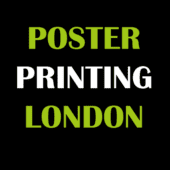Posters are a powerful tool for conveying information, promoting events, and showcasing creativity. While professional design software like Adobe Photoshop or Illustrator is often preferred for creating posters, PowerPoint offers a user-friendly alternative that’s accessible to everyone. In this guide, we’ll walk you through the process of creating stunning posters in PowerPoint, empowering you to unleash your creativity and captivate your audience with visually compelling designs.
Setting Up Your Poster:
Open PowerPoint and create a new presentation.
Go to the “Design” tab and select “Slide Size.”
Choose “Custom Slide Size” and enter the dimensions for your poster. Typical poster sizes include A4, A3, or custom sizes like 24×36 inches.
Click “OK” to apply the custom slide size to your presentation.
Designing Your Layout:
Start by selecting a background color or image for your poster. You can choose a solid color from the “Format Background” options or insert an image to serve as your background.
Divide your poster into sections using text boxes, shapes, or lines. This will help organize your content and make it easier to read.
Experiment with different layouts and arrangements to find a design that works best for your content. Remember to leave ample space for text, images, and other elements.
Adding Content:
Insert text boxes to add titles, headings, and body text to your poster. Choose fonts and font sizes that are easy to read and complement your design.
Insert images, graphics, and charts to enhance your poster’s visual appeal and convey information effectively. You can import images from your computer or use PowerPoint’s built-in shapes and icons.
Use smart art and diagrams to illustrate concepts and processes in a visually engaging way. PowerPoint offers a variety of pre-designed smart art templates that you can customize to suit your needs.
Enhancing Visual Appeal:
Experiment with colors, fonts, and typography to create a cohesive and visually appealing design. Stick to a consistent color scheme and font style throughout your poster for a polished look.
Add visual interest with gradients, shadows, and other effects. PowerPoint offers a range of formatting options that allow you to customize shapes, text boxes, and images to suit your design aesthetic.
Reviewing and Finalizing:
Once you’ve finished designing your poster, take a step back and review it for any errors or inconsistencies. Check spelling, grammar, and formatting to ensure everything is correct.
Ask for feedback from colleagues, friends, or mentors to get a fresh perspective on your poster design. Incorporate any suggestions or revisions as needed.
Save your poster as a PowerPoint file for future editing or export it as a PDF or image file for printing and sharing.
Conclusion:
Creating posters in PowerPoint is a versatile and accessible way to design visually compelling materials for a variety of purposes. By following these steps and experimenting with different design elements, you can unleash your creativity and produce professional-looking posters that captivate your audience and convey your message effectively.
